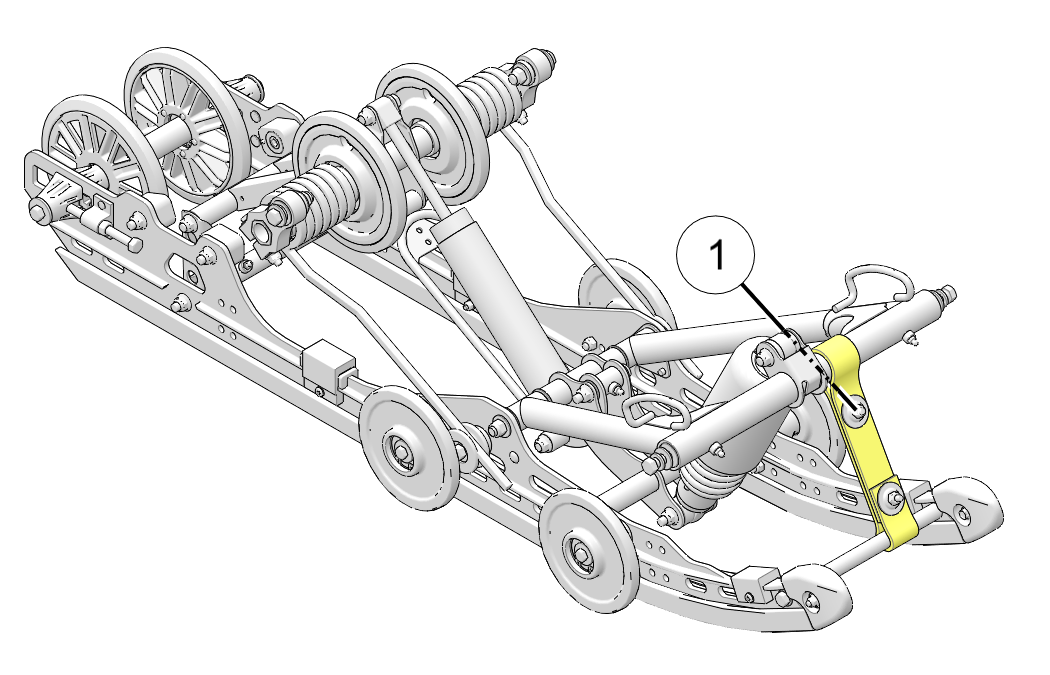
Content Source: 2020 550 Indy 144 Owner’s Manual (9929781 R01) > The Perfect Fit Chapter
| IMPORTANT |
|
The Owner's Manual for this vehicle contains warnings, instructions and other information you must read and fully understand before safely riding or performing maintenance on this vehicle.Always follow the warnings and instructions in Owner's Manual. Click the CONTENTS link above for the Table Of Contents, or download a full PDF of the Owner Manual in the Owner Support area of Polaris.com |
| TIP |
| Keep the suspension pivot points lubricated. This will reduce moisture and rust build-up and ensure proper function of the suspension components. Grease rear suspension pivots before adjusting the rear suspension. |
| Allow a passenger to ride only on models equipped with a passenger seat. |
| NOTICE |
| Never adjust a spring beyond the maximum adjustment length shown in the chart. Adjusting beyond maximum adjustment will cause the spring to bottom and result in damage to your rear suspension. |
|
REAR TRACK SHOCK
SPRING (RTSS) SET-UP Measure spring length with suspension off the ground |
||||
|
Rider Weight(including all riders, gear, cargo, & accessories |
Model |
Installed Spring Length(rear suspension off the ground) |
||
| Shaded cells indicate factory settings. | ||||
|
< 160 lbs |
< 73 kg |
EVO RMK |
9.5 in. |
24.1 cm |
|
160-220 lbs |
73-100 kg |
EVO RMK |
9.12 in. |
23.2 cm |
|
220-280 lbs. |
100-127 kg |
EVO RMK |
8.75 in. |
22.2 cm |
| *RMK EVO maximum adjustment is 8.5 in. (21.6 cm) | ||||
|
REAR TRACK SHOCK
SPRING (RTSS) SET-UP Measure spring length with suspension off the ground |
||||
|
Rider Weight(including all riders, gear, cargo, & accessories |
Model |
Installed Spring Length(rear suspension off the ground) |
||
| Shaded cells indicate factory settings. | ||||
|
< 160 lbs |
< 73 kg |
550 INDY Adventure/Voyageur/LXT |
11.125" |
28.2 cm |
|
550 INDY 144 |
||||
|
160-220 lbs |
73-100 kg |
550 INDY Adventure/Voyageur/LXT |
10.75" |
27.3 cm |
|
550 INDY 144 |
10.5" |
26.7 cm |
||
|
220-280 lbs. |
100-127 kg |
550 INDY Adventure/Voyageur/LXT |
10.5" |
26.7 cm |
|
550 INDY 144 |
10.125" |
25.7 cm |
||
|
280-340 lbs. |
127-154 kg |
550 INDY Adventure/Voyageur/LXT |
10.125" |
25.7 cm |
|
550 INDY 144 |
9.75" |
24.7 cm |
||
| 340-360 lbs. | 154-163 kg |
550 INDY Adventure/Voyageur/LXT |
9.875" |
25 cm |
| TIP |
| The rear bumper may need to be lifted upward slightly to fully extend the suspension. |
| Suspension | Recommended Sag | Adjustment | See Page |
|---|---|---|---|
| INDY 121 | 3-4 inches (7.5-10 cm) | Torsion Spring Preload | Torsion Spring Preload (121) |
| INDY 155 | 4 inches (10 cm) | Torsion Spring Preload | Torsion Spring Preload (155) |
| INDY EVO | 1.5-2.5 inches (3.8-6.3 cm) | Torsion Spring Preload | Torsion Spring Preload (121) |
| TIP |
| This is only an initial setup, and final spring preload may vary based on rider preference and riding conditions. Accessory springs with a higher load rating are available for some models. Please see your dealer for availability. |


| TIP |
| Your dealer can help you with initial setup and additional setup instructions to help you achieve your optimum ride. A scissor stop tool is also available from your dealer. |
© Copyright Polaris Industries Inc. All rights reserved.